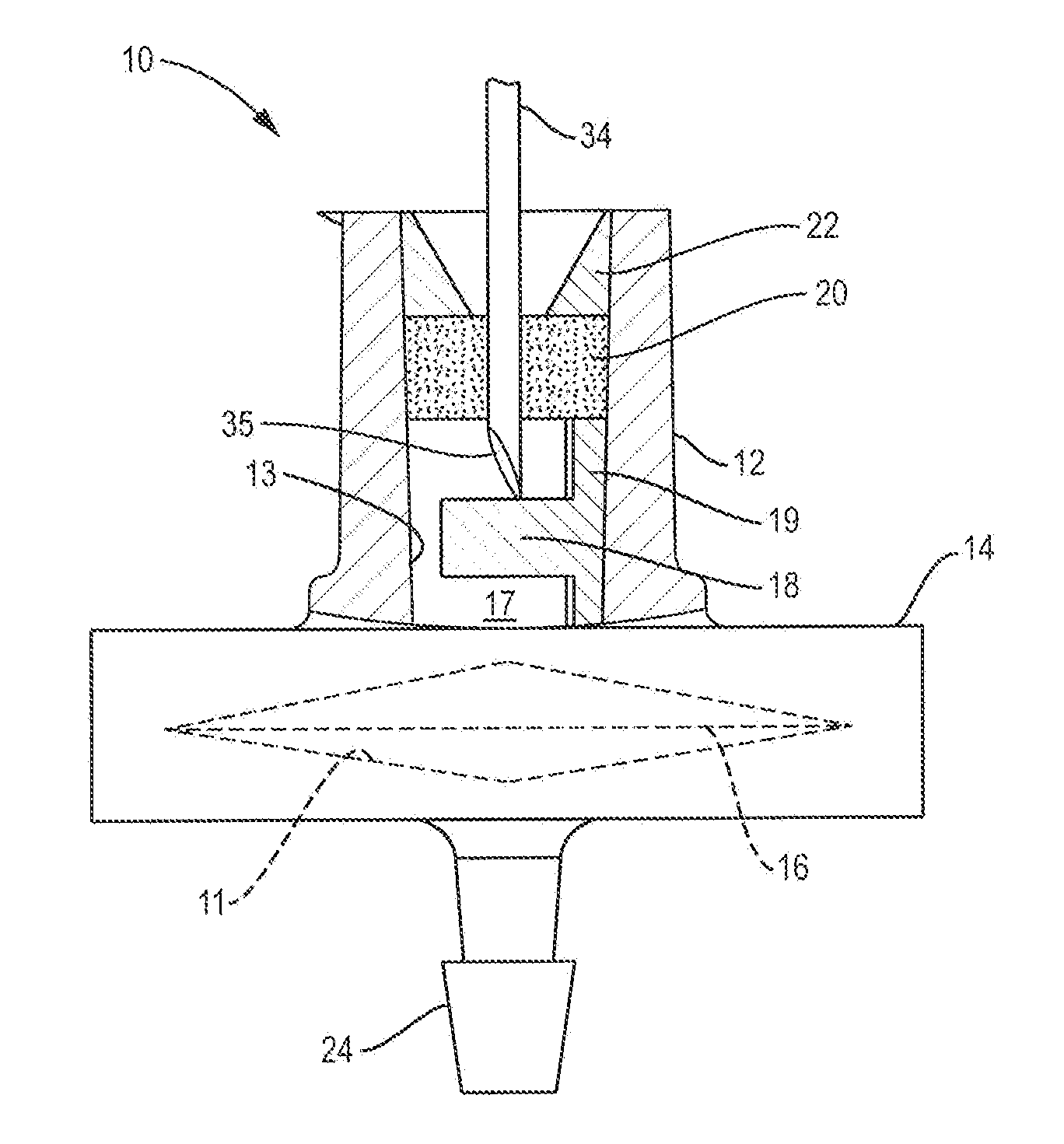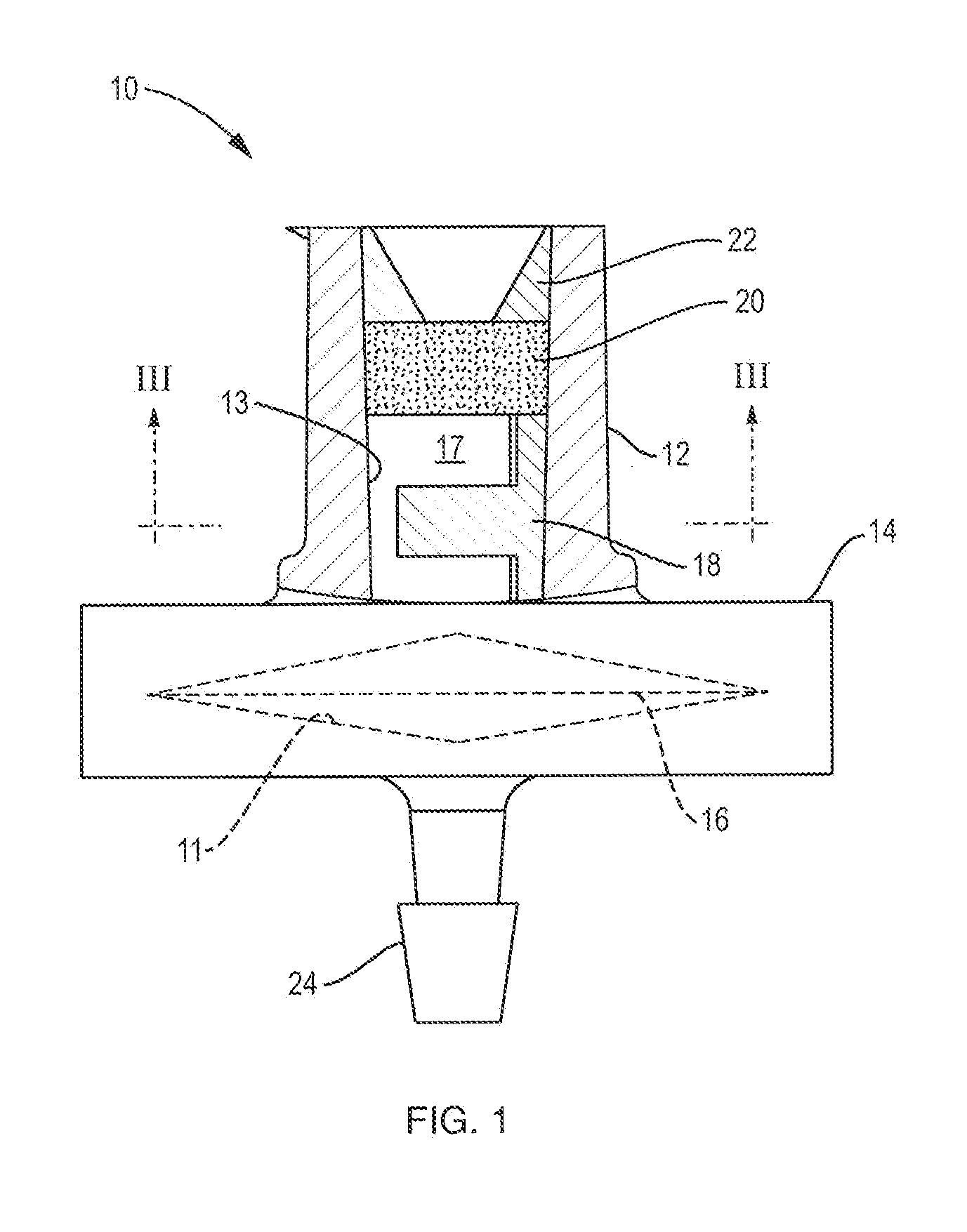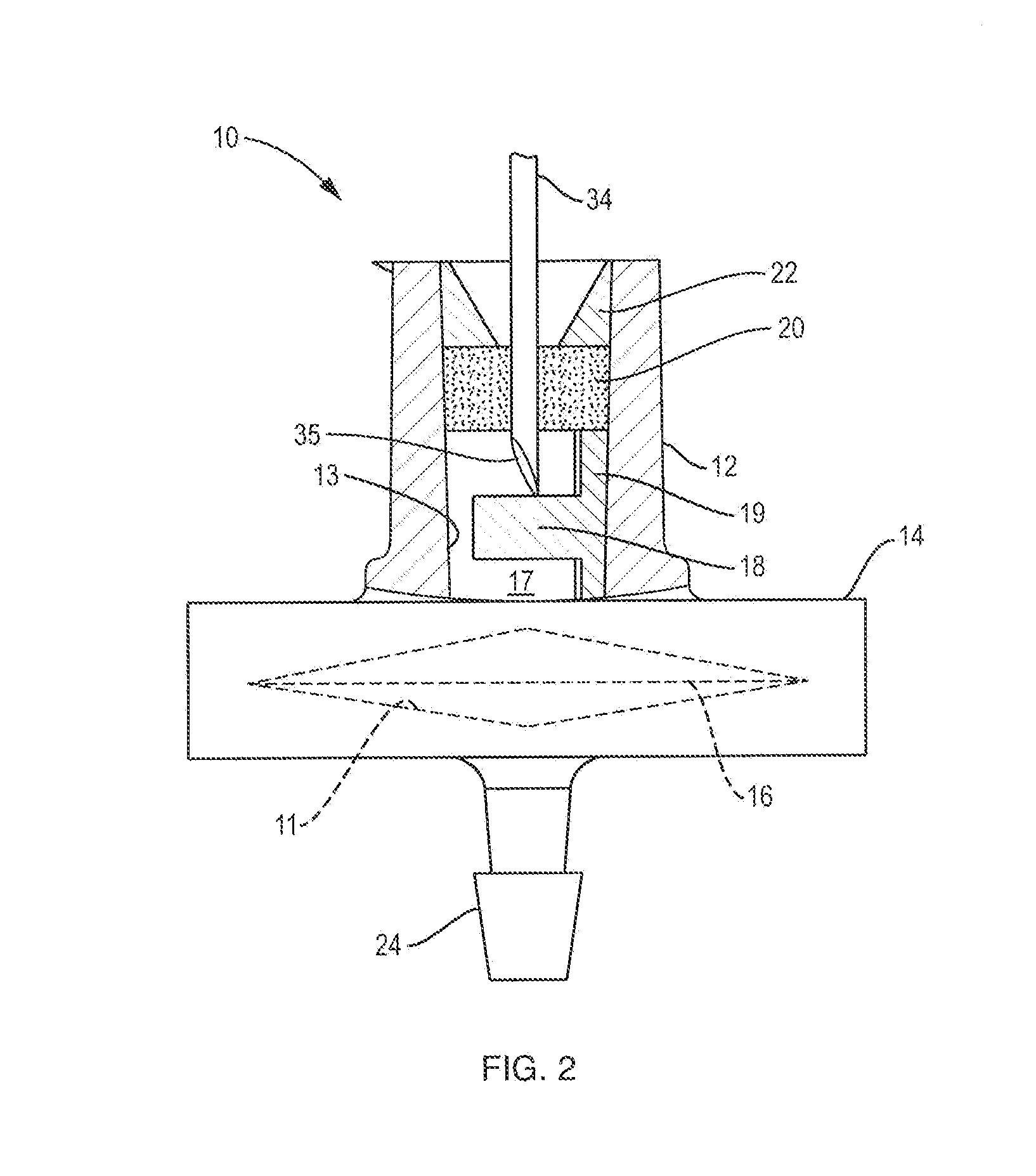Needle Filter Apparatus
a filter apparatus and needle technology, applied in the direction of packaging foodstuffs, packaged goods types, pharmaceutical containers, etc., can solve the problems of contaminating touching, sneezing, coughing, and contaminating the solution via environmental factors, and the risk of contamination of the solution is large, and the substances used to make the solution may also pose contamination risks
- Summary
- Abstract
- Description
- Claims
- Application Information
AI Technical Summary
Benefits of technology
Problems solved by technology
Method used
Image
Examples
Embodiment Construction
[0046]Referring to FIGS. 1 and 2, in one aspect of the disclosure, a truncated needle filter apparatus is shown generally as 10. Apparatus 10 includes a substantially cylindrical body 14 that defines a generally hollow filter chamber 11 configured to hold one or more filters 16. Capsule 10 may be formed in other regular or irregular geometric shapes to accommodate a wide variety of filter configurations secured in the capsule. A primary consideration is to use a filter dimensioned to fill filter chamber 11 sufficient to ensure any fluid that enters body 14 will flow through the filter before exiting.
[0047]Extending from a first end of body 14 is hose barb 24 configured to receive tubing and the like. The barb can be used directly as an inlet to receive fluid, or may be used as a connector to receive an end of a tube, the other end of which is placed into a container from which fluid will be drawn. If barb 24 is used without tubing, apparatus 10 is brought to the fluid source so as t...
PUM
 Login to View More
Login to View More Abstract
Description
Claims
Application Information
 Login to View More
Login to View More - R&D
- Intellectual Property
- Life Sciences
- Materials
- Tech Scout
- Unparalleled Data Quality
- Higher Quality Content
- 60% Fewer Hallucinations
Browse by: Latest US Patents, China's latest patents, Technical Efficacy Thesaurus, Application Domain, Technology Topic, Popular Technical Reports.
© 2025 PatSnap. All rights reserved.Legal|Privacy policy|Modern Slavery Act Transparency Statement|Sitemap|About US| Contact US: help@patsnap.com



